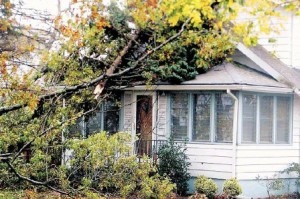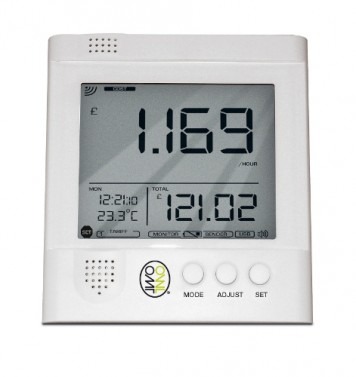Have you ever spent some time watching home improvement and design shows on TV and pictured yourself up there with the designers and home repair professionals who have become reality TV stars? Before you jump into redesigning your home, or even tackling that DIY project you’ve had sitting on the back burner, make sure you have the right tools. Here are some essentials that every would-be DIYer needs to have on hand. [Read more…]
Digital Tools and their Energy Saving Power
Global energy consumption achieved a historical record in 2009 when it was reduced by 1.5 percent. The reduction was attained for the first time since the Second World War.
For many years now, there have been aggressive campaigns worldwide and on the web to raise awareness on ways to lower energy consumption starting in the home. Up to this day, though, there are still people not very familiar with tools they can use to keep track of their power usage and help them save on their electricity bills.
The experts have pointed out that being in the know about one’s energy consumption can prompt consumers to take action in cutting their power bills. A new study has also confirmed that if homeowners have digital tools to set their preferred temperature and prices, electricity usage can be reduced by up to 15 year per year. If this is attained within a period of two decades, power plants and other infrastructure can save some $70 billion plus there would no longer be any need to set up coal-fired plants.
[Read more…]
Redecorating a Home can Boost Happiness
In creating a home design today, the trend is towards neuro-architecture. This means taking into consideration certain factors such as light, space and room layout to ensure the physical and mental well-being of the occupants.
According to experts in architecture and design, the concept here is to consider the effects of each feature of the architectural environment on the brain processes notably those involving emotions, memory and stress. They say homeowners can do some improvements in their abode that will also help enhance their moods.
One aspect to consider is the home decor. Families can place picture frames of their happy moments in the living room or hallways or display books they’ve read on the shelves. Research has shown that seeing something familiar around the house helps family members stay grounded.
The kitchen should also be made as both a social and dining area. It should be a functional space as well where the children can do their homework and relax while sharing stories. A good way to renovate it is to position the cooking area in a way that mom or dad does not face a wall but faces the table or bar where they eat. A kitchen with a good view of a beautiful landscape or one facing a door is also ideal. [Read more…]
How Does Home Swapping Work?
Did you know that you can spend a holiday in your dream destination without spending a fortune? Yes, you can. The answer is home swapping.
The practice of swapping homes has been going on around the world for decades now. Many couples and families have been taking advantage of this and most were satisfied with their experiences.
Home swapping dates back to 1953 and originally involved low-cost accommodations only. During its early days, it was done through snail mail. Its popularity peaked in the 1970s when more people joined in the trend. Today,interested couples and families can experience living temporarily even in high end homes in top tourist destinations they’ve only dreamed of in the past.
[Read more…]
How to Prepare Emotionally and Financially for a Storm
When you know that a storm or hurricane is heading to your locality, you can take immediate steps to prepare your family and home for any eventuality. Preparing means you have to ready yourself emotionally, physically and financially. Take your clue from the recent devastation in the U.S. when hurricane Sandy hit the east coast.
First up, be strong and brave for your family especially if you have kids. Stay calm and prepare the things you will need should the worst happens.

Focus on the basics first. Have cash ready and buy groceries in advance, fill up your gas tank and stock up water as well. For your communication devices such as mobile phones and other electronic items, make sure to fully charge them so you can reach out to others in case power is cut off in your place. Also, prepare your batteries for use in flashlights, mobile phones, digital cameras and radios.
If you have bills that need to be paid, pay them early while you still have time. You may opt to enroll in mobile or online banking at this time for your convenience.
The next most important step is to make an inventory of all your items at home. Every homeowner needs to do this even when no hurricane or any natural disaster is in sight. This is very helpful because in the event your home is damaged, you have a checklist ready to submit to your insurance agent and company.
In addition to listing your personal items, it is strongly recommended today to take photos of them as well as of your entire house. You will need these images in the claims processing stage to show your insurer the condition of your home and personal possessions before they were damaged.
Preparing an emergency kit is as vital. This should include your very important documents such as your insurance policies, tax information, inventory and personal papers. You should also put in here your cash and if possible, use a plastic envelope with a tight seal to prevent water from getting in.
If you want to make sure that your home is fully covered for damages, you may want to purchase additional cover specifically for flood and water damage. A basic home insurance would normally cover just wind and water damage caused by heavy rain that goes through your roof, holes in the walls, windows and doors. A flood policy is a separate one.
You may also want to ask your insurance agent in advance about the documents your insurer requires when filing a claim after your home gets badly affected by the storm or hurricane. This will save you time in filing your claim in case your house gets damaged. Do take photos of the damage as well so you can send them right away as you file your claim.
Remember to always learn about your home insurance coverage and the other plans available. Click here to find out more.
Photo via northjersey.com



